phosphate rock beneficiation process
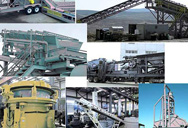
Mining and Beneficiation of Phosphate Ore
2016.4.13 In phosphate rock beneficiation, the availability of water is of primary importance and may determine the process or processes
More
Synoptic view on P ore beneficiation techniques
2022.4.1 Beneficiation process Type of Mineral Applications; Flotation: Siliceous phosphate rock Calcareous phosphate rock Calcareous-siliceous phosphate rock: Widely
More
A Tailor Made Approach for the Beneficiation of
2020.10.13 In parallel, beneficiation methods for phosphate rock are finite and include: comminution and size separation (crushing, grinding, attrition, screening and
More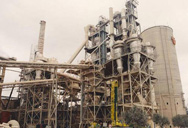
Cradle-to-gate life cycle assessment of beneficiated phosphate rock ...
2022.1.21 The process “Wet beneficiation phosphate rock” has direct emissions to water such as fluorine, cadmium, zinc, sulfate, and phosphorus. Besides, the results
More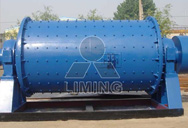
Management and valorization of phosphate beneficiation
2023.4.29 Starting with the extraction process where the phosphate rock is separated from the associated minerals of guange and sent to the beneficiation plant. In this second
More
Review on Beneficiation Techniques and Reagents
2019.1.30 In this review, the dominant techniques for the beneficiation of phosphate ores are introduced. Moreover, the factors that affect the flotation of phosphate ore, including the properties of
More
Efficiency developments in phosphate rock mining over the
2015.12.1 The phosphate mining process encompasses the extraction and primary beneficiation of ore (PR-Ore) to produce marketable phosphate rock concentrates (PR
More
A Comprehensive Review on Occurrence and Processing of Phosphate Rock ...
2023.1.2 ABSTRACT In general, the phosphatic rock contains around 0.05 wt% rare earth elements (REEs). The global commercial phosphatic rock output is anticipated to
More
On the Phosphate Rock Beneficiation for the Production of
1992.1.1 The first challenge in the phosphate industry is the reduction of impurities in the phosphate rock so that it is suitable for phosphoric acid production. This review
More
A Tailor Made Approach for the Beneficiation of
2020.10.13 In parallel, beneficiation methods for phosphate rock are finite and include: comminution and size separation (crushing, grinding, attrition, screening and classification), mineral separation (flotation, gravity and magnetic separation) and ocassionally, chemical and thermal methods (acidulation, calcination etc.).
More
Cradle-to-gate life cycle assessment of beneficiated phosphate rock ...
2022.1.21 The process “Wet beneficiation phosphate rock” has direct emissions to water such as fluorine, cadmium, zinc, sulfate, and phosphorus. Besides, the results show that the beneficiation of phosphate rock directly impacts water depletion with a contribution of 0.012 m 3 /kg P 2 O 5.
More
Review on Beneficiation Techniques and Reagents
2019.1.30 The requirements for phosphate concentrate used in wet phosphoric process are (1) a P 2 O 5 grade higher than 30%, (2) a CaO/P 2 O 5 ratio less than 1.6, and (3) a MgO content less than 1% [ 3 ].
More
Management and valorization of phosphate beneficiation
2023.4.29 The mining industries produce phosphate rock with 28–31% of P 2 O 5 content. The phosphate ore is generally separated from the minerals of granges in different steps using several processes. After mining, the phosphate ore underwent a screening process on-site to separate the phosphate rock from the bulky mine wastes (on-site sand
More
A Comprehensive Review on Occurrence and Processing of Phosphate Rock ...
2023.1.2 The global commercial phosphatic rock output is anticipated to obtain 250 million tons per year, making phosphate rocks a significant source of REEs. The review discusses the geological aspects of phosphate rocks, their availability, and methodologies to convert them to phosphoric acid and ultimately to phosphogypsum.
More
Review on Beneficiation Techniques and Reagents Used for Phosphate
2019.4.25 Many beneficiation techniques can be employed to upgrade the P2O5 grade of phosphate ores based on their characteristics in chemical composition and texture. The flotation process is most widely ...
More
Beneficiation of Phosphate Rock domain - Arkema
Beneficiation. of. Phosphate Rock. Phosphate is a key element in all living organisms. It is found in phospholipids in every biological membrane, as a component in adenosine triphosphides (ATP) which fuel cell functions, and in bones and teeth as calcium phosphate. There is no synthetic substitute for phosphate, which makes the responsible and ...
More
Beneficiation of Phosphate Ore - Society for Mining,
2014.1.20 Beneficiation of Phosphate Ore examines various methods for processing phosphate rock, an important mineral commodity used in the production of phosphoric acid. The majority of phosphoric acid is produced by the wet process, in which phosphate rock is reacted with sulfuric acid to produce phosphoric acid and gypsum (calcium sulfate
More
Phosphate Rock: Origin, Importance, Environmental Impacts
2016.6.24 Cadmium concentration in phosphate rock varied from 3-150 mg/kg with average concentration of 18 mg/kg, while uranium concentration in phosphate rock is ranging from 20 to 500 mg/kg with average ...
More
Efficiency developments in phosphate rock mining over the
2015.12.1 Looking at post-beneficiation phosphate rock concentrate, the average grade of global capacity declined from 32.5% P 2 O 5 in 1983 to 30.1% P 2 O 5 in 2013. The global average was less affected by the tonnage changes in the US and China than was the case for the ore values because, for both producers, their concentrate grades on average
More
Phosphate Rock Beneficiation - 911 Metallurgist
2019.1.20 Limited production, often as by-products, has been noted in South Africa, Brazil, and other countries. In recent years, and even recent months, we have learned of many new areas being considered as
More
Chemical Beneficiation of Phosphate Rock E MJ
2024.2.9 During this process, much of the phosphate values are lost to the tailings stream. For example, to obtain 1 ton of rock containing 31% P 2 O 5, about 6.5 tons of waste containing 1.69% P 2 O 5 must be discarded to the tailings impoundment (Figure 1). The industry is also burdened with importing elemental sulphur, manufacturing sulphuric acid ...
More
Waste rock reprocessing to enhance the sustainability of phosphate ...
2022.12.25 The form of a phosphate mine waste rock pile depends on two criteria: the disposal method (top-down or bottom-up) and the land surface (flat or horizontal) (Blight, 2009).Different configurations of the mentioned criteria are illustrated in Fig. 3.The top-down disposal method involves discharging waste rock over an advancing face (Fig. 3 A–C
More
Separation of H3PO4 from HCl-wet-processing phosphate
2020.10.15 The hydrochloric acid route was firstly proposed by the Israeli Mining Industrials (IMI) [5], [6].The schematic diagram of the IMI hydrochloric acid route is shown in Fig. 1 (a). The process includes the decomposition of phosphate rock with HCl, solvent extraction of H 3 PO 4 and the purification of H 3 PO 4 by post-treatment. The key
More
Waste rock reprocessing to enhance the sustainability of phosphate ...
2022.12.25 Introduction. Phosphorus (phôs: light and phoros: bearer in Greek), which is an essential element for all life forms, is a major and vital non-renewable resource (Elbendary et al., 2019; Sis and Chander, 2003).Phosphorus was discovered by Henning Brand in 1669 (Huminicki and Hawthorne, 2002). Phosphate rock is mainly used as a
More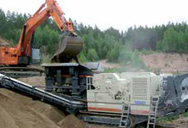
Chemical Processing of Phosphate - Florida Polytechnic
Chemical Processing of Phosphate. The phosphate mineral as it exists in the ground is not soluble and is hard for the plant to access. To provide the plant with the phosphate it needs, in a form it can take up through its roots, the phosphate rock is converted to phosphoric acid. It is that acid that is used to make fertilizer.
More
Report on Abu Tartur Phosphate Rock Beneficiation
Phosphate rock sources may be of igneous or sedimentary origin. Results: In Egypt, the natural phosphate rock is located in Sebaiya (Nile Valley), Safaga (Red Sea), and Abu Tartur (Western Desert). The higher the organic matter contents in soil, the better dissolution of the PR. Legumes are particularly suited for the use of PR.
More
Phosphate Beneficiation Tenova
Giuseppe Zanzi. Chief Representative Officer, South East Asia and Oceania. Contact us. Tenova Advanced Technologies provides the full suite of technologies for the beneficiation of phosphate rock. Project services ranging from process development through feasibility studies to design and supply projects.
More
Simplified process of phosphate rock mining operations and
Download scientific diagram Simplified process of phosphate rock mining operations and the industrial wet beneficiation process at CPG, Tunisia from publication: Cradle-to-gate life cycle ...
More
Phosphorus — a Circular Journey from the Ground to the
2023.9.11 The use of phosphorus by mankind is long established. From use in agriculture, foods, high tech electronics, and more recently in EV battery cathode production, one cannot escape its impact on today’s society. This paper will review and describe the circular journey of phosphorus through its value chain from the mining operation of
More
Phosphate rock processing - ResearchGate
2023.1.1 January 2010. X.G. Yin. Download Citation On Jan 1, 2023, Deepak Kumar and others published Phosphate rock processing Find, read and cite all the research you need on ResearchGate.
More
Phosphate Rock - U.S. Environmental Protection Agency
2023.3.29 The use of phosphate rock requires the removal of impurities, a process specific to the grade of the deposit. Mined phosphate rock is washed, crushed, screened, and floated before chemical processing can take place. Beneficiation steps may include separation of particles, crushing, and grinding to separate the phosphate from other
More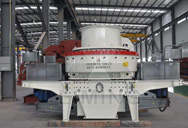
Innovations in beneficiation technology for low grade phosphate
As high grade deposits of phosphate rock are being depleted day by day in the world, future sources will be derived from low grade rocks containing various impurities. Low grade phosphate rocks are not suitable for direct use in acidulation plants unless their tricalcium phosphate (TCP) content is increased to 70% or more, using conventional methods such
More
Recent process developments in beneficiation and
2023.3.29 Abstract. Rare earth elements (REEs) are irreplaceable materials supporting low-carbon technology and equipment, and their commercial demand and strategic position are becoming increasingly prominent. With the continuous depletion of rare earth (RE) resources, developing high-efficiency beneficiation and eco-friendly
More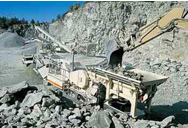
Phosphate Rock - an overview ScienceDirect Topics
Phosphate Rock. When phosphate rock, phosphorus concentrate, and fluxes are smelted in an electric arc furnace under temperatures of 1400–1500°C (2552–2732°F), molten slag is formed and tapped out from the furnace and goes through an air-cooling or water quenching process. ... Production requires first the beneficiation of the ore ...
More
Updated Characterization of Dorowa Phosphate Rock Mined
2019.10.4 The physical and chemical characteristics of mined phosphate rock will vary temporally as the location and nature of the ore body changes and as the type of equipment used in the beneficiation processes change over time. For the Dorowa phosphate rock (DPR) in Zimbabwe where economic challenges have affected the viability of
More
Reagents used in the flotation of phosphate ores: a critical
2003.7.1 Phosphate rock needs processing to reduce the content of gangue minerals such as silicates, carbonates, and clays to meet the requirements of the phosphate industry. ... Anazia and Hanna (1987) developed no-conditioning process, referred as Mineral Resource Institute (MRI) process, in the beneficiation of carbonate, mainly dolomite, rich ...
More
Innovations in beneficiation technology for low grade phosphate
2017.3.15 As high grade deposits of phosphate rock are being depleted day by day in the world, future sources will be derived from low grade rocks containing various impurities. Low grade phosphate rocks are not suitable for direct use in acidulation plants unless their tricalcium phosphate (TCP) content is increased to 70% or more, using conventional
More
Mining and Beneficiation of Phosphate Ore - Semantic Scholar
2016.4.13 The first commercial production of phosphate rock began in England in 1847. A wide variety of techniques and equipment is used to mine and process phosphate rocks in order to beneficiate low-grade ores and remove impurities. The eighth chapter of this book deals with mining and beneficiation of phosphate ore. The principle and
More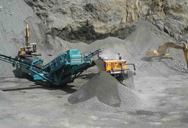
Reagents used in the flotation of phosphate ores: a critical
2003.7.1 Phosphate rock needs processing to reduce the content of gangue minerals such as silicates, carbonates, and clays to meet the requirements of the phosphate industry. Froth flotation method has been an important part of the concentration process since the 1920s and today, more than half of the world’s marketable phosphate is produced by
More- مکزیک استخراج معادن و ماشین آلات
- شاشة تهتز الصناعية لاستخراج الماس
- محطم خام الذهب فاصل
- ماشین آلات اروپا مورد استفاده برای گچ
- من عامل مطحنة lotery
- كبير آلة الهيل مجفف التقليدية
- طواحين زينث
- الصين معدات التعدين كسارة متنقلة
- مقاومت فشاری مکعب بتن و سیلندر
- قطع غيار agen كسارة فكية di seang
- البازلت سحق جهاز صور الهند لمشروع
- مختومة المعدات كسارة الأسطوانة
- مصنع طواحين أعلاف في الامارات
- ff2 معدات الطحن
- سعر مطحنة في دبي